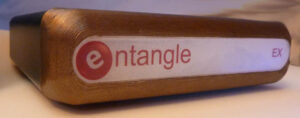As broadcasters have started turning on DRM for their services, viewers using HDHomeruns and other devices have started to lose access to those services. Here in the SF Bay Area, CBS, NBC, and Univision stations have encrypted their services while ABC, FOX, and the independent KRON remain in the clear. On a recent trip to Honolulu we also noted a number services have flipped the protection switch since our previous trip in February. As a result we have switched back to the ATSC 1.0 versions of these services, where we an record, watch, trick play, and stream throughout and outside the home via Project Entangle. (We are pleased that to date ABC has resisted the urge to protect their 3.0 service and enjoy ABC Nightly News via KGO’s 3.0 service.)
In response to the frustrations of losing access to protected 3.0 services, Lon Seidman started a change.org petition urging the FCC to take action and prevent broadcasters from encrypting their services. Readers of this blog know that we do not view protection of 3.0 services favorably – in particular services which are comparable to existing free and in-the-clear ATSC 1.0 services (which is at present basically all 3.0 services). There is a place for DRM in ATSC 3.0, and Evoca’s service was a great example.
If you haven’t signed the change.org petition, we urge you to do so. It can be found at:
https://www.change.org/p/tell-the-fcc-no-drm-encryption-of-atsc-3-0-broadcasts
Lon Seidman also filed a complaint with the FCC. In their reply the FCC provided a way for consumers to share their experiences and how they are harmed by ATSC 3.0 DRM. We encourage you to submit a comment via
https://www.fcc.gov/ecfs/filings/express
Continue reading “Koherence’s response to FCC Docket 16-142 and ATSC 3.0 DRM”



 Project Entangle – our platform for exploring ways of obtaining and consuming media – was developed on PCs and up until now Entangle platforms have largely been laptops or NUCs. They make great development environments and have a plethora of tools often missing from embedded platforms. But even “thin and light” laptops are big and power-hungry compared to most set-top boxes, and, we’ve always kept an eye out for ways we might piece together a more compact version. And we finally took our first step in that direction with a Raspberry Pi 4 and HDHomerun Flex 4k packaged in a DeskPi Pro chassis.
Project Entangle – our platform for exploring ways of obtaining and consuming media – was developed on PCs and up until now Entangle platforms have largely been laptops or NUCs. They make great development environments and have a plethora of tools often missing from embedded platforms. But even “thin and light” laptops are big and power-hungry compared to most set-top boxes, and, we’ve always kept an eye out for ways we might piece together a more compact version. And we finally took our first step in that direction with a Raspberry Pi 4 and HDHomerun Flex 4k packaged in a DeskPi Pro chassis.